Imagine giving your home a fresh look with a single upgrade that brightens every room and boosts value. The bay and bow window debate is at the forefront for homeowners who want both style and practicality in 2025.
This article delivers a detailed, side-by-side comparison to help you decide which bay and bow window style best suits your needs. We will cover design, benefits, efficiency, costs, installation, and the latest trends so you can make a confident, informed choice for your home.
Bay windows are a defining architectural feature for many homes, often forming the centerpiece of a room. If you are weighing the bay and bow window options, understanding the unique characteristics of bay windows is essential. Let’s break down their design, functional strengths, possible drawbacks, and the statistics that matter most for homeowners considering this upgrade.
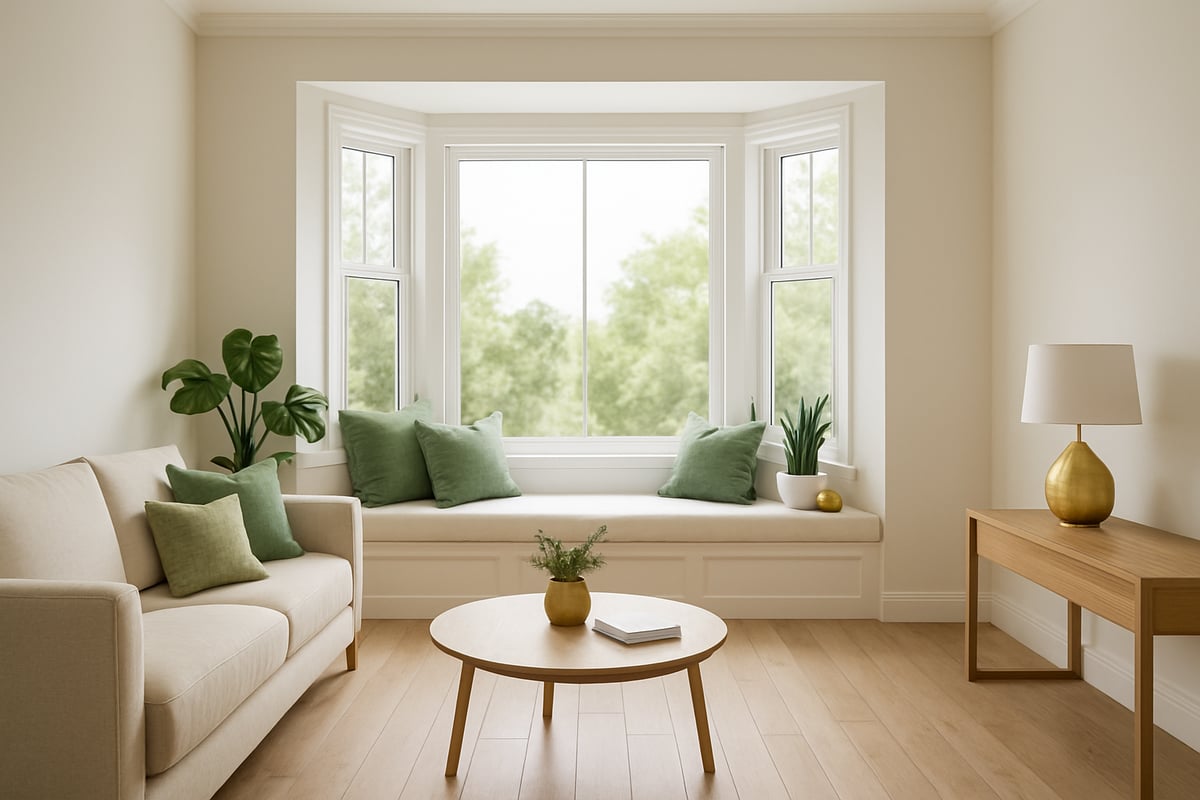
A bay window is typically made up of three individual windows—one large fixed center window and two smaller operable flankers—arranged to project outward from the main wall of the house. This projection, often called a bump-out, adds both dimension and character to your home’s exterior. Common installation angles for bay windows are 30, 45, or 90 degrees, each offering a distinct architectural profile.
The outward extension of a bay window is not just for show. It actually increases the usable area inside the room, making the space feel more open and inviting. Bay windows are especially common in Victorian-era homes, but their bold lines and dramatic effect have also made them a favorite in modern home designs. When comparing bay and bow window styles, the angular structure of a bay window stands out for its ability to create a focal point from both inside and outside the home.
One of the primary functional advantages of a bay window is the added floor space it provides. The bump-out can be used for a cozy breakfast nook, a reading corner, or even integrated storage beneath a window seat. This makes the bay and bow window discussion especially relevant for homeowners looking to maximize both style and utility.
The design of bay windows also enhances the amount of natural daylight that enters the room. The large center pane, combined with angled side windows, captures sunlight from multiple directions, brightening your interior. Ventilation is another key benefit, as the operable flanking windows allow for cross-breezes and improved airflow.
Many homeowners choose bay windows to create spaces that invite relaxation, such as a nook for enjoying morning coffee or a spot for displaying houseplants. In the bay and bow window debate, bay windows are frequently selected for kitchens and dining areas, where extra space and light are especially valuable.
While bay windows offer many advantages, there are important considerations to keep in mind. The outward projection of a bay window typically requires structural modifications to your home’s exterior wall. This can increase both the complexity and the cost of installation compared to standard flat window replacements.
The pronounced angles of a bay window may not blend seamlessly with every architectural style. For some homes, especially those with very modern or minimalist exteriors, the angular bump-out might feel out of place. Additionally, furnishing around a bay window can be a challenge, as the protrusion alters the flow of the room and may limit furniture placement options.
Cost is another factor in the bay and bow window conversation. Because of the structural work involved and the custom angles, bay windows often come with a higher price tag. If you want a detailed breakdown of how bay and bow window installations differ in terms of design, cost, and functionality, consider reviewing this Bay Windows vs Bow Windows - A Comparison Guide.
Industry research highlights that bay windows are a top choice for boosting home value and curb appeal. According to Renewal by Andersen, installing a bay window can add up to three feet of additional interior space, a significant benefit for homeowners seeking more room without a full addition. Real estate experts often note that homes with bay and bow window features tend to attract more buyers and command higher resale prices.
Recent data also shows that bay windows are consistently ranked among the most sought-after architectural upgrades, especially in regions where maximizing natural light is a priority. The combination of increased space, enhanced views, and improved daylight makes bay and bow window installations a wise investment for many property owners. For those in coastal areas, impact-resistant bay windows are gaining popularity due to their ability to meet strict local building codes while providing aesthetic and functional value.
Bow windows are a popular choice for homeowners looking to elevate their living spaces. When comparing the bay and bow window options, bow windows stand out for their elegance and ability to create an open, airy atmosphere in nearly any room.
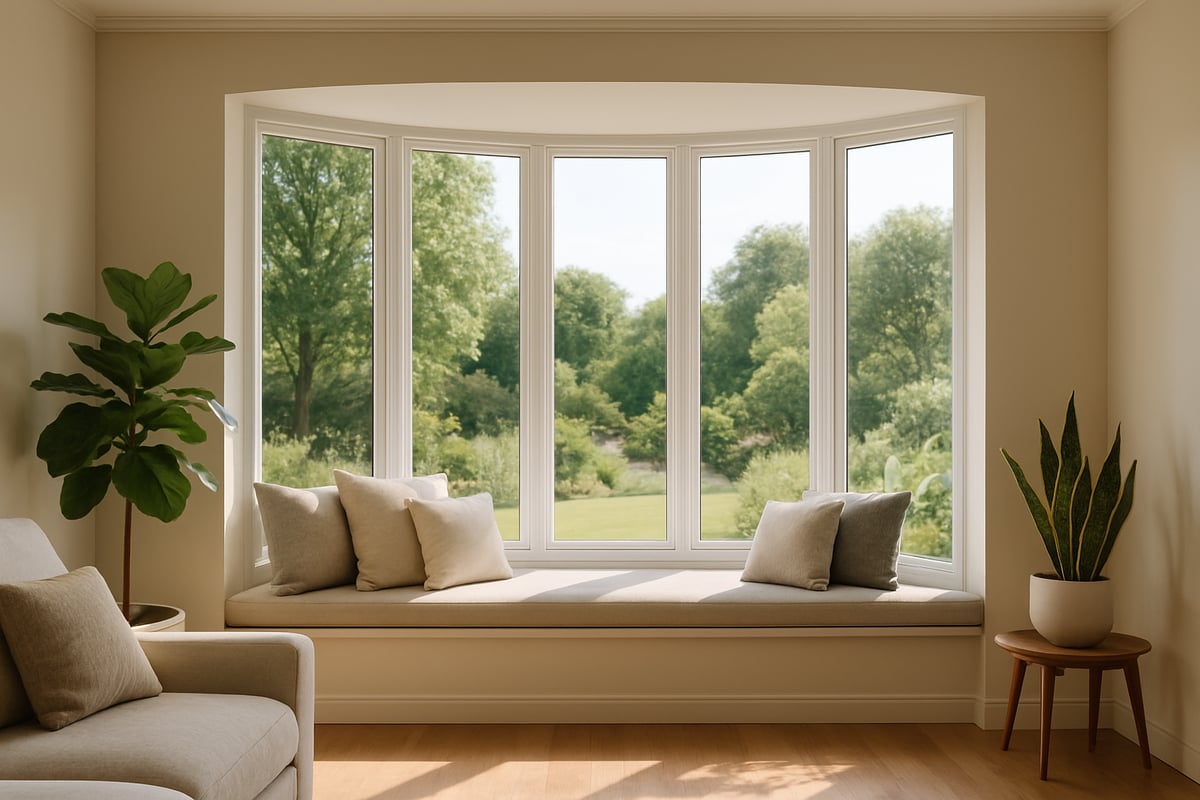
A bow window is crafted from four or more equally sized window panels that join to form a gentle outward curve. This design contrasts with the sharper angles found in a bay and bow window setup, offering a softer, more continuous line along the exterior wall.
Bow windows typically project less from the wall than bay windows, resulting in a subtler architectural statement. The smooth curve of a bow window makes it suitable for both traditional and modern homes, delivering a sense of refinement.
Homeowners often choose bow windows to enhance large rooms or create an elegant façade, seamlessly blending with a variety of home styles. The flexibility in panel number also provides design versatility in a bay and bow window selection.
The primary functional advantage of a bow window is its ability to provide a panoramic, unobstructed view of the outdoors. With more glass surface area than a typical bay and bow window configuration, bow windows maximize the amount of daylight entering a room.
Bow windows can also be installed around the corners of a home, wrapping two exterior walls and offering unique visual effects. This flexibility can dramatically transform a living room, sunroom, or master suite.
Many homeowners appreciate how a bow window increases visual space, making interiors feel larger and more connected to the outdoors. The design also lends itself well to window seats and decorative displays, further enhancing the bay and bow window experience.
Despite their elegance, bow windows have a few notable drawbacks. Compared to a bay and bow window, bow windows add less usable floor space because their projection is more subtle. This means there is less opportunity for built-in seating or storage beneath the window.
The complexity of a bow window’s design, with more window units and custom curvature, typically results in higher installation costs. Custom window treatments are often necessary, as standard blinds or curtains may not fit the curved profile.
Installation can be challenging, especially when retrofitting a bow window into an existing structure. The larger number of panels also means more points requiring maintenance, compared to other bay and bow window styles.
Bow windows are well regarded for their panoramic effect, often featuring four to six panels, which greatly increases the glass area compared to a standard bay and bow window. According to Pella, bow windows are favored for their ability to flood interiors with natural light and provide sweeping outdoor views.
Recent industry data shows that bow windows can include up to six panels, creating an almost continuous wall of glass. This design is especially popular in homes seeking a modern, elegant aesthetic.
A quick comparison table highlights key features:
| Feature | Bow Window | Bay Window |
|---|---|---|
| Panels | 4–6 | 3 |
| Shape | Curved | Angular |
| Floor Space Added | Less | More |
| Cost | Higher | Lower |
For more in-depth analysis, the Bay vs. Bow Windows Comparison Guide provides additional insights on design, costs, and customization options for bay and bow window choices.
The continued preference for bow windows in luxury remodels and new builds underscores their enduring appeal, making them a top contender in any bay and bow window decision for 2025.
Choosing between bay and bow window styles can be challenging for homeowners who want to balance aesthetics, function, and value. To help clarify the distinctions, let's explore the main differences in design, usability, installation, and more.
| Feature | Bay Window | Bow Window |
|---|---|---|
| Shape | Angular (3 panels) | Curved (4+ panels) |
| Space Added | More interior floor space | Subtle bump out |
| View | Focused, outward | Panoramic, continuous |
| Cost | Generally less | Typically higher |
| Ventilation | Flanking windows operable | Fewer panels open |
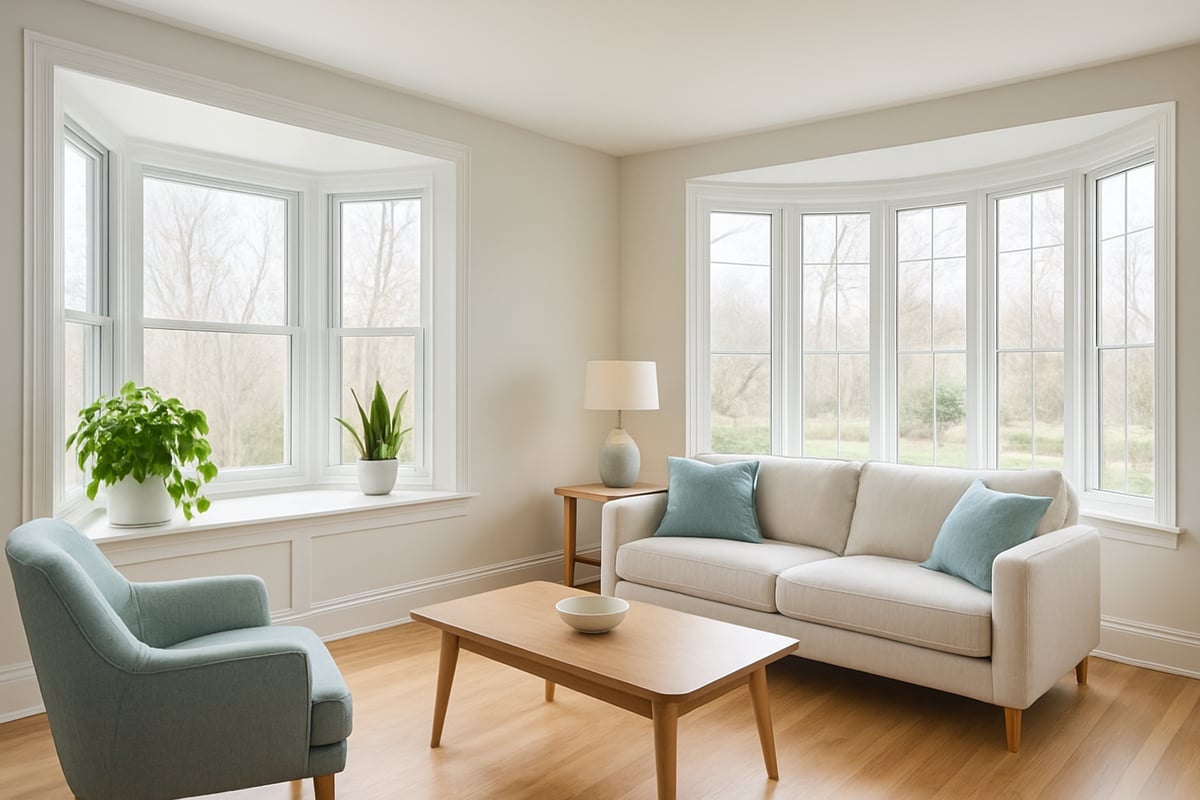
The design of bay and bow window options is one of the most noticeable distinctions. Bay windows use three panels, creating an angular, dramatic projection that stands out architecturally. In contrast, bow windows are built from four or more equally sized panels, forming a gentle, sweeping curve that offers a seamless, elegant look.
Bay windows often suit Victorian or traditional homes, emphasizing bold exterior lines. Bow windows, with their softer shape, work well in both classic and contemporary designs, providing a more understated but sophisticated appearance. When selecting between bay and bow window styles, consider which profile best complements your home's exterior.
Bay and bow window configurations add varying amounts of usable space. Bay windows project further from the wall, delivering extra floor area that's perfect for seating, storage, or a cozy reading nook. This added space is a prime reason many homeowners choose bay windows for kitchens or breakfast areas.
Bow windows, while still expanding the interior, have a subtler bump out. They maximize the view rather than the floor area, making them ideal for living rooms where a wide, uninterrupted view is desired. Both bay and bow window setups can transform a room, but the choice depends on whether you value extra space or a broader vista.
A key advantage of both bay and bow window units is the influx of natural light. Bow windows excel in this area, offering more glass surface and a broader field of view, which allows sunlight to fill the room throughout the day.
In terms of ventilation, bay windows typically feature operable flanking windows, letting you enjoy cross breezes and improved airflow. Bow windows may include operable units, but with more panels, not all may open. For those prioritizing a light-filled, airy space, both bay and bow window designs deliver, with subtle differences in function.
Installing bay and bow window styles requires careful planning and professional expertise. Bay windows, due to their pronounced projection, often demand additional structural reinforcement to support the outward bump out. This can add complexity and cost, especially in older homes.
Bow windows, with their curved design and increased panel count, present their own challenges. The installation process is more intricate, particularly if the wall is not perfectly flat. For homeowners curious about the technical aspects and what to expect during a project, the Bay vs. Bow Windows: The Complete Buyers' Guide provides an in-depth overview.
Cost is a significant factor when evaluating bay and bow window options. Generally, bow windows are more expensive. This is due to the increased number of glass panels and the complexity of creating a smooth, curved appearance. Installation costs can be 10 to 20 percent higher for bow windows compared to bay models.
Bay windows, while typically less costly, can still vary in price depending on size, materials, and structural needs. Both bay and bow window installations are considered premium upgrades that can boost home value and curb appeal.
Modern bay and bow window products can both provide excellent energy performance when built with advanced materials. Bay windows, with fewer seams, often offer slightly better insulation and reduced air leakage risk. The curved design of bow windows, however, means more joints and a larger glass area, which can impact efficiency if not properly sealed.
Selecting double or triple-pane glass, low-E coatings, and professional installation ensures that both bay and bow window styles help maintain indoor comfort and energy savings.
Maintenance needs for bay and bow window installations are similar overall. Bow windows have more panels, which means more points of potential wear and a bit more time spent on cleaning and inspection. Both types require regular weatherproofing and attention to caulking to prevent drafts or leaks.
Durability depends on the quality of materials and the expertise of the installation team. With proper care, either window style can last for decades, enhancing both the beauty and function of your home.
The year 2025 brings new standards for energy efficiency in the bay and bow window market. Homeowners are looking for solutions that not only elevate style but also deliver measurable savings and comfort. Let’s explore how technology, installation, and climate needs shape the performance of bay and bow window designs.
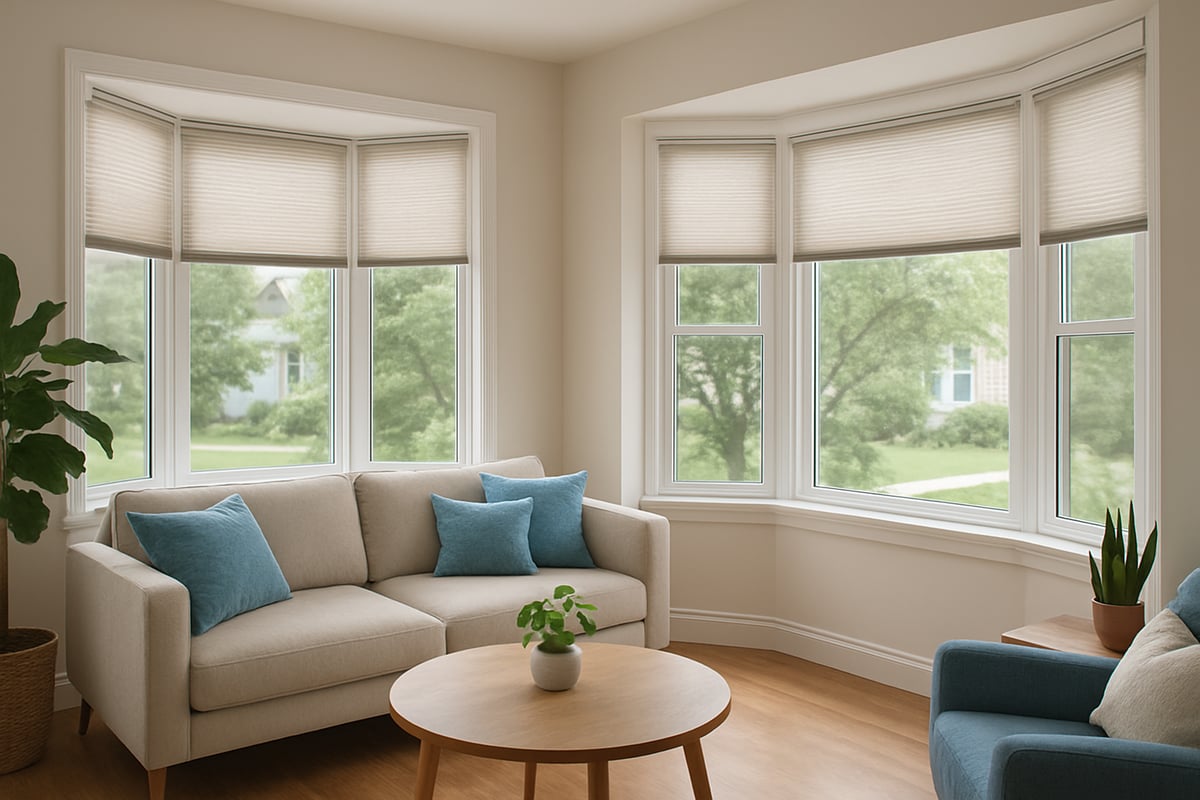
Recent advancements have transformed the energy performance of the bay and bow window styles. Low-emissivity (Low-E) glass coatings are now standard, reflecting heat while allowing visible light to flood your space. Many models use argon or krypton gas fills between panes, improving insulation and reducing heat transfer.
Insulated frames made from vinyl, fiberglass, or composite materials further boost efficiency. Smart window technology is also on the rise, offering self-tinting glass, integrated blinds, and UV protection that adapt to changing sunlight. These upgrades ensure your bay and bow window choices are not just beautiful, but also built for comfort and savings.
When comparing bay and bow window efficiency, design plays a crucial role. Bay windows typically have fewer seams and joints, which can translate to better insulation and reduced air leakage. The angular structure of a bay and bow window impacts how the units fit together, affecting thermal performance.
Bow windows, with their gentle curve and multiple panels, have more connection points. This creates additional opportunities for air infiltration if not installed precisely. However, with high quality construction and sealing, both bay and bow window installations can achieve excellent energy performance.
For homeowners in Florida and coastal regions, impact-resistant glass and hurricane-rated frames are a must. The bay and bow window designs can both be customized with laminated glass and reinforced frames to meet local codes. This not only protects against storms, but also enhances energy efficiency by adding another layer of insulation.
If you want to dive deeper into the benefits and features of impact-resistant windows, the Impact windows and doors guide offers a comprehensive overview tailored to Florida’s needs. Selecting the right bay and bow window materials is an essential step in climate resilience and efficiency.
Industry data highlights impressive gains in window technology. According to Energy Star, replacing older windows with modern units can reduce energy bills by up to 12%. Leading manufacturers like Pella and Renewal by Andersen report that both bay and bow window styles are now engineered with energy savings in mind.
| Feature | Bay Window | Bow Window |
|---|---|---|
| Seams/Joints | Fewer | More |
| Glass Area | Moderate | Larger |
| Typical Insulation | High | High (with proper install) |
This table illustrates key efficiency differences between bay and bow window designs in 2025.
To get the most from your bay and bow window investment, consider these strategies:
With the right approach, your bay and bow window upgrade can deliver comfort, security, and lower energy costs all year round.
Understanding the cost, value, and return on investment for bay and bow window options is essential for homeowners planning upgrades in 2025. Both styles offer unique benefits, but their financial impact can vary depending on your priorities and home type.
The initial investment for a bay and bow window project can vary considerably based on size, material, and customization. On average, bay window installation ranges from $2,000 to $5,000 and up, while bow window installation typically starts at $3,500 and may exceed $7,500 for larger, more complex designs. Bow windows are generally more expensive due to their additional panels and custom work.
For a detailed breakdown of costs and what factors influence pricing, explore Window and door replacement insights. Understanding these variables helps you budget and compare options for your bay and bow window investment.
| Window Style | Average Cost Range | Complexity |
|---|---|---|
| Bay Window | $2,000 – $5,000+ | Moderate |
| Bow Window | $3,500 – $7,500+ | High |
A bay and bow window upgrade can significantly increase your home's resale value and curb appeal. Both styles are recognized for their dramatic visual impact, but bay windows may offer a slightly higher ROI because they add usable interior space. This additional square footage, even if modest, appeals to buyers seeking functional enhancements.
Furthermore, both bay and bow window installations are considered premium upgrades, which can set your property apart in a competitive market. A well-chosen style will complement your home's architecture and attract buyers with an eye for design and comfort.
Maintenance is an important consideration when comparing bay and bow window choices. Bow windows typically have more panels, which can lead to higher potential repair costs over time. Each panel is a possible point of failure, requiring regular inspection for seal integrity and hardware condition.
In contrast, bay windows have fewer panels but their protruding design may demand more exterior upkeep, especially in climates prone to heavy rain or wind. Keeping the exterior weatherproofed and caulked ensures your bay and bow window investments remain energy efficient and durable.
Choosing an energy-efficient bay and bow window could make you eligible for tax credits or rebates, especially if you opt for impact-resistant or Energy Star-rated products. In regions like Florida, installing hurricane-rated windows can also lead to reduced insurance premiums.
These incentives can offset the upfront cost of a bay and bow window project, making the investment more attractive in the long run.
Homeowners in Southwest Florida have reported up to 15% savings on their insurance premiums after installing impact-rated bay and bow window systems. These real-world results highlight the practical financial benefits of upgrading, especially in areas susceptible to severe weather.
Additionally, many buyers perceive a home with a new bay and bow window as move-in ready and more valuable. This perception can translate into faster sales and higher offers, reinforcing the ROI potential of these stylish window upgrades.
Selecting the right bay and bow window for your home involves more than just visual appeal. Installation, customization, and compliance with local codes all play essential roles in the process. Let’s break down the key factors homeowners should consider to ensure a seamless experience and optimal outcome.
Proper installation is critical for both bay and bow window styles, as these projection windows often require structural modifications to support their weight and ensure weatherproofing. For retrofit projects, it may be necessary to reinforce existing walls and create a secure platform for the window structure. New construction offers more flexibility, but still demands careful planning to accommodate the window’s footprint and projection.
In hurricane-prone regions like Florida, homeowners should prioritize impact-resistant products and professional installation. For a step-by-step guide tailored to Southwest Florida homes, see this detailed overview on Sarasota impact windows installation. Whether you choose a bay and bow window during renovation or for new construction, expert installation is essential to maximize performance and longevity.
Today’s bay and bow window designs offer extensive customization. Homeowners can select from a variety of materials, including:
Glass options range from double or triple pane to tinted and impact-resistant varieties. Finishes span from classic painted wood to modern metal hues, with choices for hardware and integrated blinds. Unique window grid styles, decorative glass, and built-in seating or storage further personalize your installation.
For the latest design trends and material comparisons, explore this resource on Bow Window vs Bay Window: 2025 Styles + Materials. By customizing your bay and bow window, you can align function and aesthetics with your home’s unique style.
Matching the right bay and bow window style to your home’s architecture ensures harmony and curb appeal. Bay windows are ideal for properties seeking bold, angular features or extra interior space, making them popular in both Victorian and contemporary builds. Bow windows, with their gentle curve and panoramic effect, complement homes aiming for elegance and expansive views.
Assess your home’s exterior lines and proportions before choosing. A bay and bow window should enhance, not overwhelm, the existing structure. For homes with limited wall space, a bow window’s subtle projection may be a better fit, while larger rooms can benefit from the dramatic bump-out of a bay window.
In Florida and other regions with strict building codes, compliance is non-negotiable. Bay and bow window installations must meet requirements for impact resistance, wind load, and energy efficiency. Permitting processes can affect timelines and costs, so it’s important to research local regulations before starting your project.
Work with contractors familiar with your area’s codes to avoid costly delays or non-compliance issues. The right bay and bow window will not only look beautiful, but also provide peace of mind that your investment meets all safety standards.
Consulting with certified window professionals is vital for a successful bay and bow window project. Experienced contractors offer valuable insight on selecting the best style, materials, and features for your specific needs. They handle everything from measuring and ordering to installation and final inspection.
Look for companies with proven expertise in your region and a track record of code-compliant installations. A knowledgeable partner ensures your bay and bow window delivers on comfort, efficiency, and visual appeal for years to come.
The world of bay and bow window design is rapidly evolving in 2025, with homeowners seeking not just beauty but also cutting-edge performance. This year’s trends reflect a strong desire for more light, smarter technology, and greater customization, making bay and bow window options more appealing than ever.
Bay and bow window installations in 2025 are all about maximizing openness and connection with the outdoors. Larger, panoramic windows are in demand, letting in abundant natural light and providing unobstructed views.
Many homes now feature seamless transitions between interior and exterior spaces, thanks to ultra-slim frames and floor-to-ceiling glass. Smart glass technology, which can tint automatically or incorporate integrated blinds, is becoming a must-have feature for both bay and bow window designs. Minimalist finishes and contemporary hardware round out the look, appealing to those who prefer clean lines and a modern aesthetic.
Sustainability is top of mind for homeowners choosing a bay and bow window. Eco-friendly materials, such as recycled aluminum and sustainably sourced wood, are increasingly popular. Manufacturers are also prioritizing low-VOC finishes to reduce indoor air pollution and appeal to health-conscious buyers.
Window production processes are shifting toward greener methods, with a focus on reducing waste and carbon footprint. Homeowners are looking for products that not only enhance their homes but also align with environmental values.
Personalization has become a defining trend for bay and bow window upgrades. In 2025, homeowners want unique shapes, custom colors, and bespoke hardware that reflect their style. Integrated window seats, built-in storage, and decorative grids offer functional beauty and make each installation stand out.
Advancements in manufacturing allow for near-limitless customization, so whether you envision a dramatic reading nook or a sunlit breakfast alcove, your bay and bow window can be tailored to fit your vision perfectly.
Regional needs are shaping bay and bow window choices, especially in coastal and hurricane-prone areas. Impact-resistant designs are now standard in places like Florida, where storm protection is crucial. Homeowners seek windows that meet strict building codes and provide peace of mind during severe weather.
Coastal properties favor expansive bow windows for capturing ocean views, while inland homes may prioritize bay windows for added space and versatility. For those with questions about safety and compliance, Top questions about impact windows can help clarify what to look for in a secure bay and bow window installation.
Market research indicates that bay and bow window installations are leading the premium window sector in 2025. Homeowners are investing in projection windows for both style and energy performance, with smart home integration driving further adoption.
Manufacturers are responding by enhancing energy efficiency, offering multi-pane glazing and advanced weatherproofing. The bay and bow window market is expected to grow steadily, as more consumers seek upgrades that blend aesthetics, technology, and sustainability.
The innovations shaping bay and bow window design in 2025 ensure that homeowners have more options than ever to create spaces that are beautiful, efficient, and uniquely their own.
As you consider the unique benefits and design possibilities of bay versus bow windows for your home in 2025, it’s clear that making the right choice can transform your living space, boost energy efficiency, and enhance curb appeal. With so many factors to weigh—from installation and materials to hurricane protection and modern aesthetics—it helps to have an expert on your side. If you’re ready to explore your options and see which style best fits your needs, let’s talk through your vision together. Call Now For A Free No Obligation Estimate!

Discover the 2025 guide to Port Charlotte impact windows replacement. Learn about trends, costs, benefits, and expert tips to protect and upgrade your home.
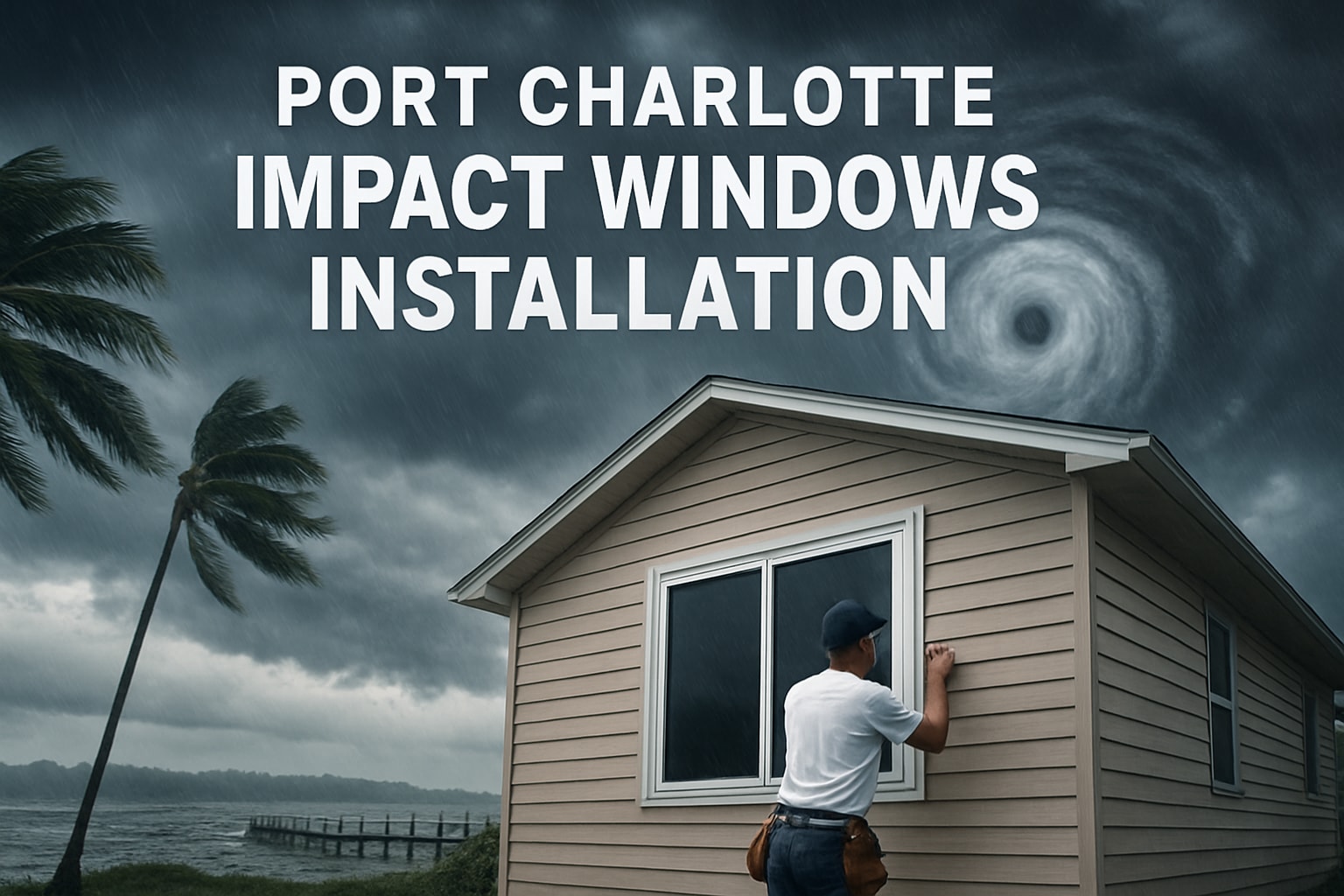
Learn how to ensure safety and compliance with our expert Port Charlotte impact windows installation guide for 2025 covering steps, regulations, costs, and maintenance.

Discover the North Port Therma Tru doors professional guide for expert advice on selection, installation, compliance, and maintenance to boost home value in 2025.